Are you a Quiet Speculation member?
If not, now is a perfect time to join up! Our powerful tools, breaking-news analysis, and exclusive Discord channel will make sure you stay up to date and ahead of the curve.
Modern's detractors have long cast the format as a writhing mess of linear decks, all ignoring each other or skillfully opening sideboard hosers all the way to each hyper-aggressive Top 8. But until recently, Modern's pound-for-pound fairest deck---Jund---has commanded more metagame shares than almost anything else. That deck's resignation as king gave way to a variety of decks, including sleeker versions of BGx. And now, it's primed for a comeback. At the center of each shift lies Fatal Push.
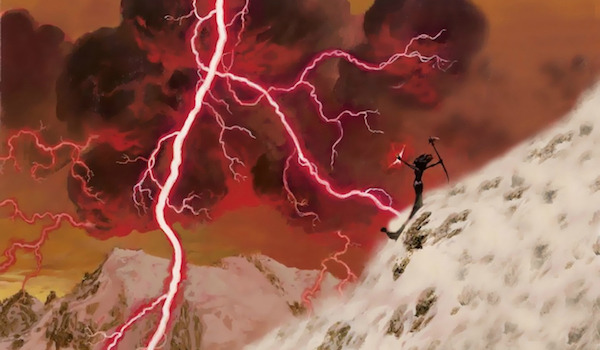
In dethroning Tarmogoyf as the play-or-die fair-deck poster-child, Fatal Push has opened up plenty of design space for Modern's fair decks. This week, we'll take a closer look at Push's effects on the format and the fair decks the card enables.
The Push Trajectory
Plenty has been written on Fatal Push at this point; Nexus itself has covered Push's applications in control decks, its impacts on creature playability, its overall strength in Modern, its relation to other removal spells, and, of course, the cooling effect it's had on Tarmogoyf. Here, we'll take a look at Modern almost a year after Push was spoiled, zoning in on the card's history and the format shifts that have taken place around it.
February: Shadow Becomes Interactive
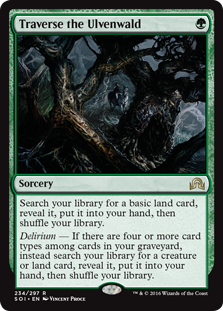 The one-two punch of Gitaxian Probe's banning and Fatal Push's sanctioning lead to the rainbow-colored, aggro-combo Shadow decks' metamorphosis into Death's Shadow Jund, which took Modern by storm at GP Vancouver.
The one-two punch of Gitaxian Probe's banning and Fatal Push's sanctioning lead to the rainbow-colored, aggro-combo Shadow decks' metamorphosis into Death's Shadow Jund, which took Modern by storm at GP Vancouver.
With Golgari Grave-Troll getting the axe alongside Probe, players skimped on graveyard hate in February, setting the stage for a delirium-based strategy to emerge. Josh Utter-Leyton and friends realized the true strength of Traverse the Ulvenwald was not to leverage access to a mid-game creature toolbox, but to functionally run additional copies of the best creatures available to a given strategy.
After a ban, players tend to ease off their ravaged broken deck and settle back into traditional format gatekeepers. Neither were those decks equipped to deal with Fatal Push nor their pilots ready for the card's impact. Death's Shadow Jund therefore preyed on Modern's go-to decks by immediately exploiting Push's power, leaving the likes of Jund and Affinity in the dust.
May: Shadow Goes Blue
Ryan Overturf's Grixis Delver list from March marks Shadow's first foray into Grixis colors, but far from its last. Grixis Shadow would soon drop the Delvers to usurp Death's Shadow Jund as the go-to Shadow variant.
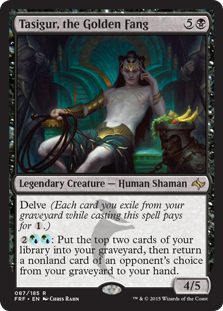 Post-Vancouver, Fatal Push surged in popularity to combat Death's Shadow Jund---after all, the card represents Modern's cleanest answer to both Death's Shadow and Tarmogoyf, the pair of which make up 100% of the deck's threats. One obvious solution for Shadow players looking to beat Push was to drop Tarmogoyf, by far their threat softest to the removal spell, for delve threats, which resist Push altogether.
Post-Vancouver, Fatal Push surged in popularity to combat Death's Shadow Jund---after all, the card represents Modern's cleanest answer to both Death's Shadow and Tarmogoyf, the pair of which make up 100% of the deck's threats. One obvious solution for Shadow players looking to beat Push was to drop Tarmogoyf, by far their threat softest to the removal spell, for delve threats, which resist Push altogether.
Enter Grixis Shadow, which replaces Tarmogoyf and Mishra's Bauble with delve threats and Thought Scour. It also moves from the grave-reliant precision of Traverse the Ulvenwald to the hand-fixing comforts of Serum Visions. Poor, flexible Abrupt Decay is an unfortunate casualty of this switch, to be sure. But in its place, Grixis gains Stubborn Denial, a valuable answer for pesky topdecks.
A breakout GP weekend highlighted by a Copenhagen win put Grixis Shadow high on everyone's radar, and locked it in as Modern's premier interactive deck for most of 2017. Without so many Abrupt Decays to worry about, Eldrazi Tron was also able to gain traction in the metagame, riding Chalice of the Void to victory against the Shadow decks. Gx Tron has always lined up well against midrange, but Shadow's high reversibility and access to Stubborn Denial complicated the plan of ramping into colorless planeswalkers; Thought-Knot Seer and Reality Smasher plugged this hole gracefully while fortifying Tron's aggressive matchups.
October: Fish Returns
Push only kills Death's Shadow and (blech) Snapcaster Mage out of the Grixis variant, and does little against Eldrazi. Likewise with Lightning Bolt. So increased the stock of catch-all removal like Path to Exile and Exterminate! going into the middle of the year.
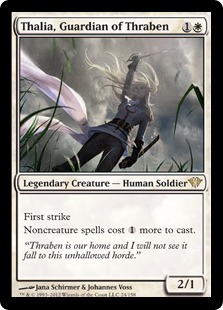 As the metagame became polarized around Grixis Shadow and Eldrazi Tron, players began looking for ways to exploit Modern's solved state. Mana denial proves problematic for both Shadow and Eldrazi when backed by a clock, and Thalia, Guardian of Thraben heavily taxes the former while shutting down Storm, the Eldrazi-killer that began cutting into Matter Reshaper's shares early this summer. Brian Coval was onto something when he took SCG's Season One Invitational with Death and Taxes.
As the metagame became polarized around Grixis Shadow and Eldrazi Tron, players began looking for ways to exploit Modern's solved state. Mana denial proves problematic for both Shadow and Eldrazi when backed by a clock, and Thalia, Guardian of Thraben heavily taxes the former while shutting down Storm, the Eldrazi-killer that began cutting into Matter Reshaper's shares early this summer. Brian Coval was onto something when he took SCG's Season One Invitational with Death and Taxes.
Some months later, Collins Mullen debuted the ultimate fish deck: Humans. His melds the tribe's best into a five-color machine that proacts like Merfolk and disrupts like Hatebears. With Shadow and Eldrazi pointing players towards Path and Exterminate!, Bolt-able, Push-able, high-priority creatures like Kitesail Freebooter and Ignoble Hierarch become a real pain to deal with. Humans capitalizes on these strained removal suites.
The Push Effect
The rise of Humans, a deck full of creatures that would never have seen the light of play in the Bolt-centric Modern of 2016, speaks to the true effect of Fatal Push: the removal spell has dramatically increased diversity among playable Modern creatures and archetypes. To get an idea of Push's impact, let's compare the Top 50 most-played Modern creatures from What's in a Goyf? to those from two weeks ago.
All but one of the eighteen CMC 1-2 creatures that did not transition to the current list (the "one" being a lone Lord of Atlantis, the 50th most-played creature at the time) can be traced to Bushwhacker Zoo, Infect, and Abzan Company. In place of the creatures lost, the ten newcomers represent fourteen different decks:
- Death's Shadow: Shadow (Jund, 5-Color, Zoo, Grixis)
- Vizier of Remedies; Devoted Druid: Counters Company, Elves
- Young Pyromancer: Grixis Delver, Mardu Pyromancer
- Goblin Electromancer; Baral, Chief of Compliance: Storm
- Bloodghast: Dredge, Hollow One
- Champion of the Parish, Thalia's Lieutenant: Humans, Humans Company
- Walking Ballista: Eldrazi Tron, Counters Company
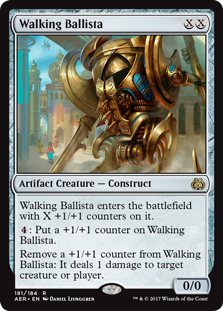 These creatures helm a healthy variety of different strategies, especially compared to the paltry three decks represented by the creatures we lost. Additionally, they tend to have significantly more overlap than the creatures from a year ago when it comes to the decks they inhabit, indicating a more open metagame.
These creatures helm a healthy variety of different strategies, especially compared to the paltry three decks represented by the creatures we lost. Additionally, they tend to have significantly more overlap than the creatures from a year ago when it comes to the decks they inhabit, indicating a more open metagame.
One possible conclusion from this data: a few dominant aggro strategies (BGx, Infect, Zoo, Abzan Company) kept diversity low pre-Push. Push's printing and the subsequent metagame shifts have resulted in a net diversity gain for Modern, essentially pulling shares away from Tarmogoyf (long the format's most-played creature) and the decks fast enough to get under it, and redistributing them among a host of different strategic archetypes that now have room to breathe.
Fairest of Them All
A fair aggro deck like Humans doing well bodes even better for fair decks in Modern. When the number of playable creatures increases, so does the value of a husky removal suite, and only fair decks can lay claim to those---everyone else is too focused on their own gameplan. So what do the future's fair decks look like?
Jeskai Control, by Jonathan Rosum (4th, SCG Syracuse)
This Jeskai list is the latest in a series of impressive finishes for the shard, a winning streak that even has Eldrazi Tron godfather Todd Stevens singing Weissman's praises. The key card in these tempo-focused builds is Spell Queller. Queller clocks in the air and boasts a ridiculous ability in matchups without efficient removal for it. Between Queller and the age-old incidental win condition of Bolt-Snap-Bolt, Jeskai has plenty of tools to close out games with these days, a crucial front it's come a long way on since the Shaun McLaren "glory" days of Colonnade-or-bust.
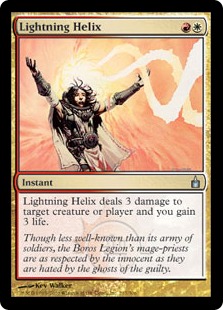 Jeskai has Bolt/Helix for small creatures and Path/permission for large ones, with Snapcaster Mage to double up on its best cards in a given matchup. Burn spells are also great in bulk vs. Shadow decks, and Jeskai features the ability to run powerful hosers in the sideboard.
Jeskai has Bolt/Helix for small creatures and Path/permission for large ones, with Snapcaster Mage to double up on its best cards in a given matchup. Burn spells are also great in bulk vs. Shadow decks, and Jeskai features the ability to run powerful hosers in the sideboard.
I can see versions of this deck sans Spell Queller succeeding should the format become radically fair (probably leaning into planeswalkers, Geist of Saint Traft, or Sphinx's Revelation). But there's always checks like Tron to keep that scenario from happening, which in turn demand the types of linear answer decks that hate facing Spell Queller. Either way, I'd count on Quellerless variants emerging and occasionally topping, but the card's got a forever home here regardless.
Mardu Pyromancer, by SELFEISEK (5-0, Competitive League)
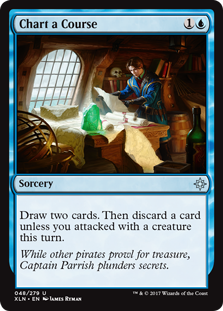 SELFEISEK has apparently been ravaging the online scene with this Mardu Pyromancer deck. Mardu Pyromancer out-grinds just about everything and practically never loses to creature decks. I featured a version of Mardu Pyromancer that splashes blue for Delver of Secrets // Delver of Secrets and Chart a Course a few weeks ago, but have come around on the idea that SELFEISEK's original creation already has the tools it needs to become a major player in Modern. The extra card draw is superfluous here, and Delver's role is better filled by Blood Moon against many decks.
SELFEISEK has apparently been ravaging the online scene with this Mardu Pyromancer deck. Mardu Pyromancer out-grinds just about everything and practically never loses to creature decks. I featured a version of Mardu Pyromancer that splashes blue for Delver of Secrets // Delver of Secrets and Chart a Course a few weeks ago, but have come around on the idea that SELFEISEK's original creation already has the tools it needs to become a major player in Modern. The extra card draw is superfluous here, and Delver's role is better filled by Blood Moon against many decks.
Graveyard hate cuts out this deck's card advantage engines, but lines up poorly against aggressive threats Monastery Swiftspear and Young Pyromancer. Paired with a discard spell and some burn, these creatures can make short work of players banking too heavily on a Leyline of the Void or Rest in Peace.
No basic Plains here, but the opportunity cost of that single Blood Moon in the main is low enough to justify the enchantment regardless. There are some games that won't come easy without its help, i.e. against Scapeshift decks. In those matchups, losing access to Lightning Helix is the least of your worries. And a dead Moon can be fed to Faithless Looting.
Jund, by Tyler Lutes (3rd, SCG Louisville)
Reid Duke said it best: nothing picks apart small creature decks like Jund. Tyler's September list borrows heavily from Duke's philosophy, down to grinning anachronism Olivia Voldaren. While I can't comment on the Vampire's viability, I will concede that discard spell into Dark Confidant is sure to pulverize any Thalia strategy out of a deck this heavy on removal spells.
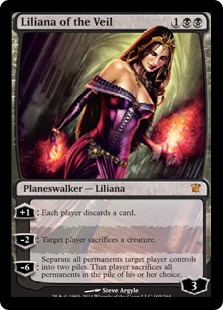 Creature decks that go smaller than Humans, namely Infect and Counters Company, have sprung up to punish such removal-light strategies. Jund stands to dominate this side of the metagame and I feel it's on the cusp of a thrilling revival. Recent lists have dipped into Blood Moon and Goblin Rabblemaster to gain an edge against big mana, but doing so might not even be necessary a month from now; perhaps the full set of Fulminator Mage will do the trick.
Creature decks that go smaller than Humans, namely Infect and Counters Company, have sprung up to punish such removal-light strategies. Jund stands to dominate this side of the metagame and I feel it's on the cusp of a thrilling revival. Recent lists have dipped into Blood Moon and Goblin Rabblemaster to gain an edge against big mana, but doing so might not even be necessary a month from now; perhaps the full set of Fulminator Mage will do the trick.
I'd also be remiss not to mention Delirium Shadow, itself the evolution of Death's Shadow Jund (now splashing blue and white for Stubborn Denial and Lingering Souls, respectively). This deck boasts many of Jund's same tools, but gives up some robustness and stability for reversibility and consistency. Its streamlined nature makes it softer to hosers and easier to hate out, but I don't see Delirium Shadow leaving the scene in the long-term. It's just too good at doing what it does, which is basically what Jund does. And what Grixis does. And what Abzan does.
Learn to Love It All
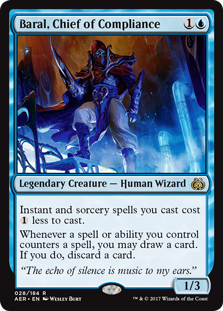
Enjoying Modern is impossible without an appetite for diversity, Wizards's number-one measurable priority when it comes to managing the format. For some, therein lies the format's curse; without a clear subset of reliable "best decks," certain draws to other constructed formats, like Standard, are eliminated. But for many others, Modern's unending diversity is a feature, not a bug; one that encourages innovative deckbuilding, succinct metagame prediction, and an equally ravenous appetite for reps.
Modern's sky is not falling, nor has it been over the course of the year. In 2017, I've heard serious calls for bans of Eldrazi Temple, Chalice of the Void, Death's Shadow, Street Wraith, Traverse the Ulvenwald, Baral, Chief of Compliance, Vizier of Remedies, and Devoted Druid. But it seems to me like Modern is just chugging along, its gears ever-spinning and ushering in constant change: move along; nothing to see here. Or stay awhile, and dust off those Lightning Bolts for the new year!




Good read and a nice touch to have those decklists in there adding credibility to what you’re saying.
Doesn’t hurt as well that these are some *tight* lists. I’ve heard rumblings through the grapevine from numerous sources that there’s a shadowy threat lurking under the surface of modern, in the form of that mardu list. This is the first time I’ve seen it formalised on the page though, and I wouldn’t be at all surprised to see it start picking up more steam over the coming weeks/months as an actual contender.
Thanks for the insight.
Mardu’s in a great position if my predictions end up being accurate. Reveler, Moon, and Souls just line up so well against three-color midrange decks. The deck breaking out would mark the wedge’s first-ever serious competitive outing in Modern!